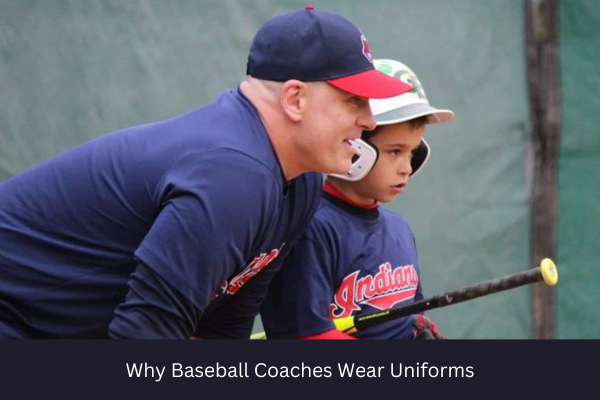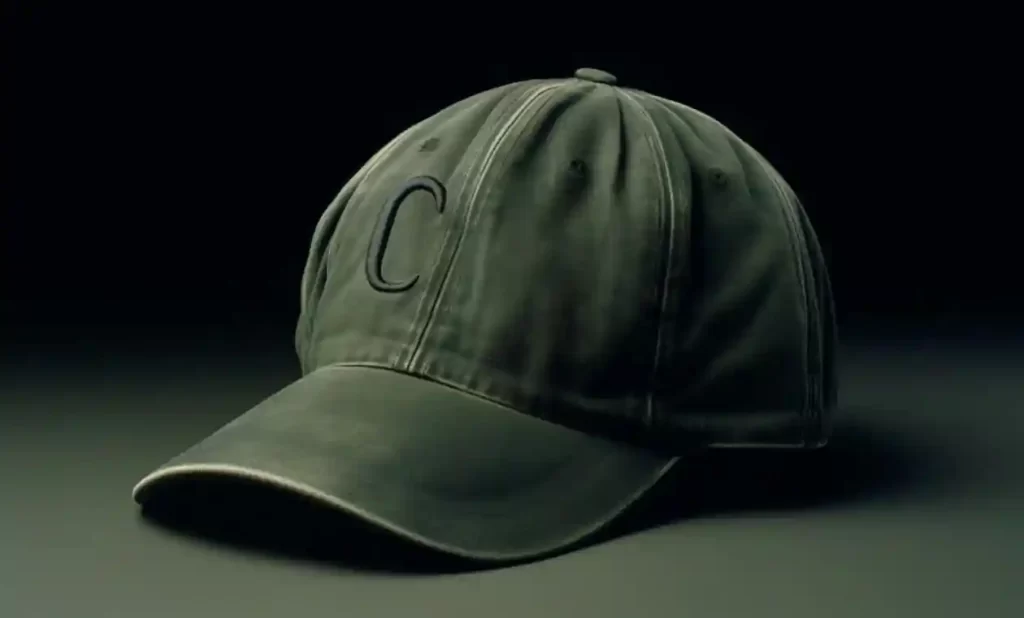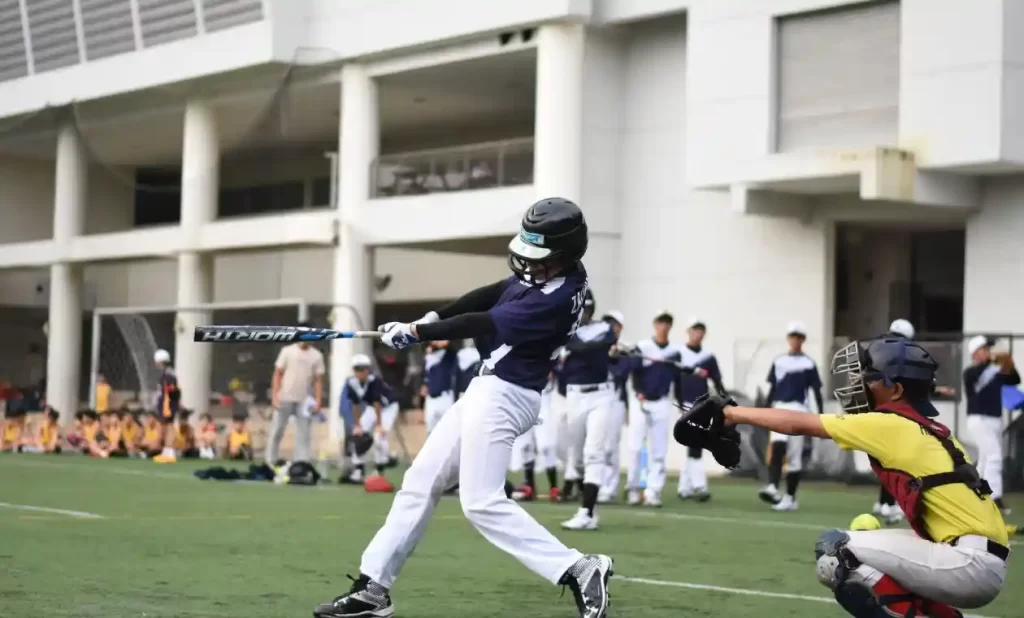 Image Credit-Pinterest
Image Credit-Pinterest
Have you ever wondered why baseball coaches, amidst the intensity of the game, proudly don uniforms just like the players on the field? In the realm of baseball, where every tradition and practice carries deep significance, the attire of coaches is no exception.
This blog will unravel the mystery behind the distinctive choice of baseball coaches to don uniforms, exploring the rich tapestry of tradition, team spirit, and functionality that weaves through the fabric of this iconic attire.
From the historical roots that bind coaches to their uniforms to the practical aspects that make it a vital part of the game, we embark on a journey to understand why baseball coaches wear uniforms and the stories behind this enduring tradition.
Join us as we dive into the dugout, peeling back the layers to reveal the symbolism, unity, and unique role that coaches’ uniforms play in the intricate dance of America’s favorite pastime.
Get ready to discover the untold stories behind the attire that bridges the gap between the strategists on the sidelines and the warriors on the field. The answer to “Why Do Baseball Coaches Wear Uniforms?” is not merely a matter of clothing; it’s a narrative woven into the very essence of baseball itself.
Team Unity and Identity
In the world of baseball, where each player is an integral thread in the fabric of a team, the attire worn by coaches is more than just a uniform; it’s a symbol of unity and identity. Coaches’ uniforms serve as a visual representation of a collective purpose, fostering a sense of togetherness that extends beyond the players on the field.
One key aspect of team unity is the idea of a shared identity. When coaches don the team uniform, they align themselves with the collective mission and values of the ballclub. This visual cohesion is powerful, creating a seamless connection between the coaching staff and the players. It sends a clear message: we are all part of the same team, working towards a common goal.
The uniform becomes a unifying factor during both victories and defeats. Whether it’s the jubilation of a home run or the resilience needed in the face of adversity, the coaches, adorned in team colors, stand shoulder-to-shoulder with the players. This shared identity fosters a supportive environment where every member, from the head coach to the rookie, feels an equal stake in the team’s success.
Moreover, coaches’ uniforms contribute to the visual spectacle of the game, reinforcing team branding and creating a distinctive presence on the field. Fans easily identify with the consistent visual representation of their team, further solidifying the emotional connection between supporters and the collective entity they cheer for.
In essence, the choice of coaches to wear uniforms transcends mere dress code; it’s a deliberate act to strengthen team spirit, forge a shared identity, and create a lasting legacy that resonates with players and fans alike. As we explore the multifaceted reasons behind coaches donning uniforms, the theme of team unity and identity emerges as a powerful force that transcends the boundaries of the baseball diamond.
Practicality and Functionality
While the spectacle of baseball is deeply rooted in tradition and symbolism, the choice of coaches to wear uniforms is not merely a nod to aesthetics; it’s a strategic decision grounded in practicality and functionality. Coaches, much like players, don uniforms with a purpose that goes beyond style, and this purpose unfolds on the intricate stage of the baseball field.
One of the primary functions of coaches’ uniforms is seamless integration into the dynamics of the game. Clad in the team colors, coaches become an organic extension of the playing unit. This visual cohesion is not just for show; it serves a functional purpose during the high-stakes moments of a game.
When a coach steps onto the field, whether to confer with a player or challenge an umpire’s call, their presence is clear and recognizable, contributing to efficient communication and decision-making.
Practicality extends to the demands of the coaching role itself. Coaches are actively involved in the game, providing strategic guidance, making real-time decisions, and, at times, physically engaging with players.
The uniform, designed for mobility and comfort, allows coaches to seamlessly navigate the intensity of the game without hindrance. From the dugout to the pitcher’s mound, coaches need to move swiftly and decisively, and the uniform facilitates this essential aspect of their role.
Additionally, the uniform serves a logistical purpose by providing a clear visual distinction between team staff and other personnel in the stadium. This clarity streamlines communication and coordination, especially in fast-paced situations where every second counts.
Beyond its practical implications, coaches’ uniforms also contribute to the game’s overall aesthetics. The sight of coaches in uniform adds to the visual drama of crucial moments, enhancing the spectator experience and reinforcing the team’s identity.
In essence, the functionality of coaches’ uniforms is intricately intertwined with the demands of their role on the field. It’s a deliberate choice that goes beyond tradition, ensuring coaches are not just spectators but active participants in the grand theater of baseball.
Relationship with Umpires: Delving into the Tradition and Impact
In the theater of baseball, the animated exchanges between managers and umpires have become an enduring spectacle, adding drama and intensity to the game. This tradition of managers arguing with umpires, often characterized by fervent discussions and emphatic gestures, is deeply rooted in the sport’s history and carries a significant impact on the dynamics of play.
The tradition of managers engaging with umpires dates back to the early days of baseball, where disagreements over calls were settled through passionate discourse. While the style and tone of these exchanges have evolved over time, the essence of this interaction remains a defining aspect of the game.
One key aspect of managers arguing with umpires is the strategic intent behind it. Beyond the immediate disagreement, these exchanges serve as a form of advocacy for the team. Managers often take on the role of vocal advocates, passionately defending their players’ interests and seeking favorable calls. This public display of support can have ripple effects, influencing not only the current decision but also potentially shaping future calls in the game.
The impact of these interactions goes beyond the immediate outcome on the field. The energy and emotion injected into the game through these exchanges become a part of the narrative, adding layers to the spectator experience. Fans are not just witnessing a game; they are immersed in the unfolding drama, emotionally invested in the ebb and flow of the contest.
However, this tradition also carries a strategic risk. Managers must tread carefully to avoid ejections that could leave the team without a crucial decision-maker on the sidelines. Striking the right balance between spirited advocacy and respectful engagement is an art that seasoned managers master over time.
As baseball continues to evolve, the tradition of managers arguing with umpires persists as a dynamic element that elevates the human drama woven into the fabric of the sport. It’s a tradition that adds nuance to the strategic chess match on the field and ensures that, beyond the precision of rules, the heartbeat of baseball is driven by the passion and intensity of those who lead from the dugout.
Evolution of Coaching Attire: Tracing the Changes Over the Years
The coaching attire in baseball is not static; it’s a dynamic canvas that reflects the changing tides of the sport and societal shifts. The evolution of coaching attire is a journey through time, marked by transformations in style, functionality, and cultural influences that have shaped the way coaches present themselves on the diamond.
In the early days of baseball, coaches donned suits or formal wear, mirroring the broader fashion norms of the time. The emphasis was more on a distinguished, authoritative look rather than the practical aspects demanded by the game. However, as baseball transitioned from its infancy to a more organized and competitive sport, the need for attire that aligned with the demands of the field became apparent.
The mid-20th century witnessed a shift towards more casual and sport-specific coaching attire. Coaches began adopting the team uniform, aligning themselves visually with the players they guided. This move towards a unified look was not only practical, allowing coaches to integrate into the team seamlessly, but also symbolically significant, reinforcing the idea of a collective striving towards a common goal.
The latter half of the 20th century and into the 21st century saw further diversification in coaching attire. With the advent of televised games and increased fan engagement, coaches became conscious of their visual representation. The traditional team uniform persisted, but variations emerged, from polo shirts to lightweight jackets, offering a balance between comfort and professionalism.
In recent years, there’s been a resurgence of more formal coaching attire, with some coaches opting for a refined look that combines elements of classic and contemporary styles. This shift may reflect a desire to blend tradition with a modern sensibility, acknowledging the evolving landscape of baseball while paying homage to its timeless essence.
Beyond the aesthetics, the evolution of coaching attire also speaks to broader cultural changes. The informality and versatility of modern coaching attire reflect a shift in societal norms towards a more relaxed and accessible approach to authority figures.
In essence, the evolution of coaching attire in baseball is a fascinating narrative that mirrors the sport’s journey from grassroots origins to a global spectacle. It’s a story of adaptation, symbolism, and a continuous quest to find the perfect balance between tradition and modernity. As we witness coaches on the field today, clad in attire influenced by decades of evolution, we see not just individuals guiding a team but also a reflection of the ever-changing spirit of baseball.
Conclusion: Unveiling the Multifaceted Role of Coaches’ Uniforms
In the intricate dance of baseball, coaches’ uniforms emerge not merely as garments but as storytellers, weaving a narrative that transcends time and tradition. The exploration into “Why Do Baseball Coaches Wear Uniforms?” unravels a tapestry rich in symbolism, practicality, and cultural evolution.
From the roots of tradition that bind coaches to the very essence of the game to the dynamic shifts in attire that mirror baseball’s journey through eras, coaches’ uniforms play a multifaceted role on the diamond. The unity and identity forged through a shared team uniform speak to a collective purpose that extends beyond wins and losses. Coaches, clad in team colors, become not just strategists but integral threads in the vibrant fabric of team spirit.
Practicality becomes paramount as we delve into the functional aspects of coaches’ uniforms. Beyond aesthetics, the attire is a tool, seamlessly integrating coaches into the dynamics of play and facilitating efficient communication. It’s a choice grounded in the very demands of the coaching role, ensuring that coaches are active participants on the field, not just observers from the sidelines.
The tradition of managers arguing with umpires injects a dose of passion into the game, turning every call into a narrative arc in the grand theater of baseball. This age-old tradition is more than a display of disagreement; it’s a strategic tool that advocates for the team’s interests and adds layers to the emotional experience of players and fans.
As we trace the evolution of coaching attire over the years, we witness not just a sartorial shift but a reflection of baseball’s journey through different epochs. It’s a continuous quest for the perfect blend of tradition and modernity, a journey that mirrors the evolving spirit of the sport.
In conclusion, coaches’ uniforms in baseball are not just about what meets the eye; they encapsulate the essence of teamwork, strategy, and the timeless drama that unfolds on the diamond.
Each stitch in the fabric tells a story, and as we witness coaches donning their uniforms, we are reminded that in baseball, every detail, every tradition, and every garment contributes to the grand symphony of America’s favorite pastime.
How much did you like this Pitch Perfect: Deciding Between 4-Seam and 2-Seam Fastballs, please share your view in the comment box, also share this blog with your friends on Social Media so they can also enjoy this blogs for more blogs visit baseballpropicks.com
Related Article –

Meet Daniel Anderson, the heart and soul behind Baseball Pro Picks. At 49, Daniel’s life has revolved around baseball, a passion that’s as strong today as it was when he first fell in love with the game. Living in the USA, Daniel has dedicated countless hours to watching, analyzing, and understanding every pitch, hit, and home run, making almost no game missed. His deep-rooted love for the sport is matched only by his commitment to sharing insightful, expert analysis with fellow baseball enthusiasts. With decades of experience and a keen eye for the game’s nuances, Daniel brings a unique perspective that enriches Baseball Pro Picks. Trust Daniel to guide you through the intricacies of baseball with the authority and trustworthiness of a true aficionado.












